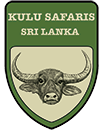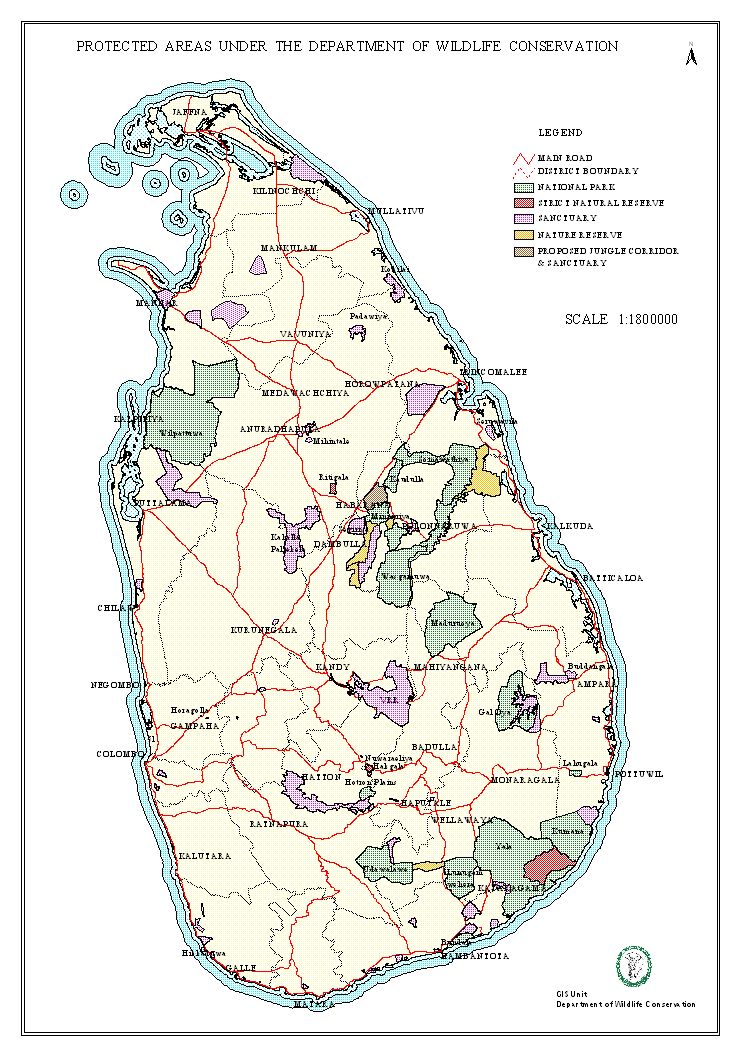
One of Asia's top wildlife destinations" - BBC Wildlife
For a tiny island (435 km long and 225 km wide), Sri Lanka features an unbelievable diversity of terrain and habitats that nurture a remarkable assortment of flora and fauna. We are proud to call home one of the richest biodiversity hotspots in the world. The island’s diverse habitats from cloud forests, rain forests, arid scrub, denser wooded jungles and riverine forests, wetlands and grassland plains, estuaries and lagoons – supports a remarkable mosaic of biodiversity. Proving wrong the belief that small islands don't have big animals, Sri Lanka is possibly the only small island in the world which boasts big cat species, bears and even wild elephants. It is in fact the only country in the world where a visitor can be lucky enough to observe the largest oceanic mammal as well as the largest terrestrial mammal all within the space of a few hours. With our very own ‘Big Five’ - elephants, leopards, sloth bears, blue whales and sperm whales, Sri Lanka is now well known as one of the best destinations for Big Game Safaris outside of Africa, however we at Kulu Safaris firmly believe that ALL of Sri Lanka's wildlife is truly special!
Sri Lanka has 62 Sanctuaries, 26 National Parks, 9 Nature Reserves and 3 Strict Nature Reserves providing a safe haven for Sri Lanka's flora and fauna.

As dawn breaks over the jungle, we are regaled with a symphony of nature sounds - countless bird calls, deep whoops from the langurs high up in the tree canopy and the distant alarm call of a startled deer as it spots the stealthy leopard watching from the edge of a waterhole - only nature herself could create such perfection.
Sri Lanka is famous for its “Big Five” - the Sri Lankan Elephant, Leopard, Sloth Bear, Blue Whale and Sperm but our Kulu Guides don’t overlook a shy, yet important supporting cast around Yala including (but not limited to) the nocturnal Loris family (Grey Slender Loris and Red Slender Loris), endangered primates (Purple Faced Leaf Monkey and Bear Monkey), small wild cats (Fishing Cat, Jungle Cat and the Rusty Spotted cat), and the fabled Forest Eagle Owl.
The most dangerous and imposing of all big mammals in Sri Lanka is the Wild Buffalo (referred to as “Kulu Haraka” in Sinhala, Kulu meaning “wild”). Local guides would reverently agree that an aggressive Wild Buffalo is the most chilling encounter to experience on safari (even more so than Leopards, Bear, or Elephant). They gather in large numbers in Kumana National Park, but healthy populations can be found in Yala, Wilpattu, and Uda Walawe National Park as well, often enjoying a cooling mud bath or wallowing in a waterhole.
Perhaps the most under-appreciated mammal on our island is the Sloth Bear. Unlike Leopards who are photogenic and have a degree of predictability to their behaviour, Sloth Bear mannerisms are random at best. Their dishevelled appearance and clumsy gait understate their true intrigue. They are nimble tree-climbers and make a ferocious adversary if you were to startle them in the wild. They nap with the innocence of tired children in the most random of places, like the hollow of a tree or in a storm drain. Yet their screams when startled or in combat reach a blood curdling pitch. Sloth Bear sightings in Yala and Wilpattu are relatively frequent and a treat for any wildlife enthusiast. The best time to spot Sloth Bear is the months during which the Palu Trees are in fruit (May & June) as they love to gorge themselves on the fruit until they fall out of the trees literally drunk on the fermenting juice of the Palu fruit.
Birdlife is abundant throughout the island, and while our camp is stocked with “bird books”, we believe getting your own for the duration of your trip will be money well spent. Our naturalists and guides are experts at identifying bird calls and will help you identify as many birds as you can from the 92 species that have been recorded right here at Kulu Camp in Yala.